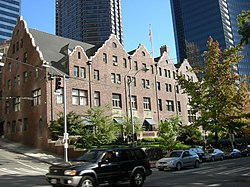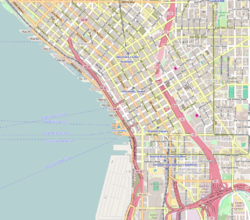
The Alaska–Yukon–Pacific Exposition, acronym AYP or AYPE, was a world's fair held in Seattle in 1909 publicizing the development of the Pacific Northwest. It was originally planned for 1907 to mark the 10th anniversary of the Klondike Gold Rush, but the organizers learned of the Jamestown Exposition being held that same year and rescheduled.
History of Seattle, Washington 1900–1940
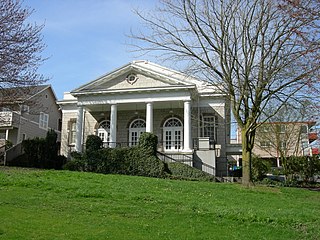
Columbia City is a neighborhood located in the southeastern part of Seattle, Washington in the Rainier Valley district. It has a landmark-protected historic business district and is one of the few Seattle neighborhoods with a long history of ethnic and income diversity.
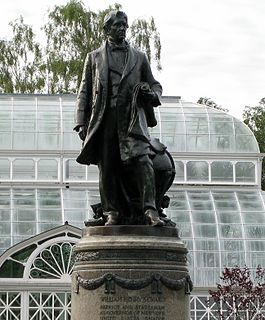
Volunteer Park is a 48.3-acre (19.5 ha) park in the Capitol Hill neighborhood of Seattle, Washington, United States.
Edward Carlson, was an American hotel and airline executive, and Seattle, Washington civic leader.
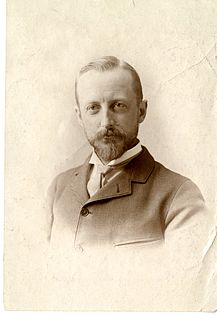
John Charles Olmsted (1852–1920), was an American landscape architect. The nephew and adopted son of Frederick Law Olmsted, he worked with his father and his younger brother, Frederick Law Olmsted, Jr., in their father's firm. After their father retired, the brothers took over leadership and founded Olmsted Brothers as a landscape design firm. The firm became well known for designing many urban parks, college campuses, and other public places. John Olmsted's body of work from over 40 years as a landscape architect has left its mark on the American urban landscape.

William C Speidel (1912–1988) was a columnist for The Seattle Times and a self-made historian who wrote the books Sons of the Profits and Doc Maynard, The Man Who Invented Seattle about the people who settled and built Seattle, Washington.

Arthur Armstrong Denny was one of the founders of Seattle, Washington, the acknowledged leader of the pioneer Denny Party, and later the city's wealthiest citizen and a 9-term member of the territorial legislature. Seattle's former Denny Hill was named after him; it was flattened in a series of regrading projects and its former site is now known as the Denny Regrade. The city's Denny Way, however, is named not after Arthur Denny, but after his younger brother David Denny.
The Union Club of the City of New York is a private social club in New York City that was founded in 1836. The clubhouse is located at 101 East 69th Street on the corner of Park Avenue, in a landmark building designed by Delano & Aldrich that opened on August 28, 1933.
Walter Charles Crowley was an American historian and activist from Washington state. He first entered the public sphere in Seattle through his involvement with the social and political movements of the 1960s, especially the underground press. He later became more widely known as a local television personality and for his pioneering work as a local historian, including co-creating the website HistoryLink.org, which he considered to be his crowning achievement.
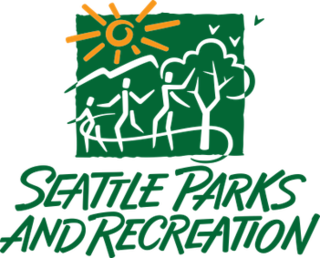
Seattle Parks and Recreation is the government department responsible for maintaining the parks, open spaces, and community centers of the city of Seattle, Washington. The department maintains properties covering an area of over 6,200 acres (25 km2), which is equivalent to roughly 11% of the city's total area. Of those 6,200 acres (25 km2), 4,600 acres (19 km2) are developed.

David Thomas Denny was a member of the Denny Party, who are generally collectively credited as the founders of Seattle, Washington, USA. Though he ultimately underwent bankruptcy, he was a significant contributor to the shape of the city. Roger Sale, in his book Seattle, Past to Present, described him as having been "the pioneer to turn to if one had a plan that would be 'good for Seattle', and one needed a respectable tone and a willing investor."
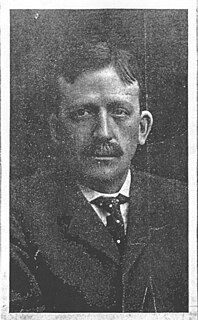
Erastus Brainerd was an American journalist and art museum curator. During the Yukon Gold Rush, he was the publicist who "sold the idea that Seattle was the Gateway to Alaska and the only such portal".

Samuel Hyde House is a building at 3726 East Madison Street in Seattle, United States listed in the National Register of Historic Places. The building, built in 1909–1910 for liquor magnate Samuel Hyde, housed the residence of the Russian consul-general from 1994–April 2018 when the US State Department evicted the consul-general following the White House ordered closure of Russia's Seattle consulate office.
Allied Arts of Seattle is a non-profit organization in Seattle, Washington, USA. The organization advocates for public funding of the arts, better urban planning and architecture, and other civic improvements. The organization claims to be the "oldest non-profit organization in Seattle dedicated to urban livability", but, in any case, at 50+ years old is certainly a venerable organization by the standards of a city barely older than 150 years It was a major force in establishing the Seattle Arts Commission, creating Seattle Center on the grounds of the Century 21 Exposition and preserving historical landmarks and neighborhoods, particularly Pioneer Square and Pike Place Market, as well as defeating the 2012 Seattle Olympic bid.

The Sulgrave Club is a private women's club located at 1801 Massachusetts Avenue NW on the east side of Dupont Circle in Washington, D.C. The clubhouse is the former Beaux-Arts mansion on Embassy Row built for Herbert and Martha Blow Wadsworth and designed by noted architect George Cary. During World War I the Wadsworth House was used as the local headquarters for the American Red Cross.

Jacob Furth was an Austrian Empire-born American entrepreneur and prominent Seattle banker. He played a key role in consolidating Seattle's electric power and public transportation infrastructure, and was a member of Ohaveth Sholum Congregation, Seattle's first synagogue. Bill Speidel called him "the city's leading citizen for thirty years," adding that Furth "may even have been the most important citizen Seattle ever had."

The Washington Athletic Club, founded in 1930, is a private social and athletic club located in downtown Seattle. The 21-story WAC clubhouse opened in December 1930, and was designed in the Art Deco style by Seattle architect Sherwood D. Ford.
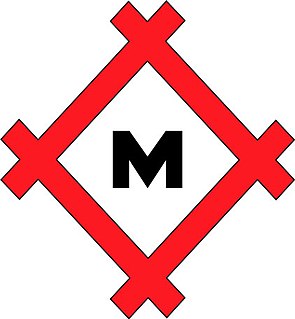
The Missouri Athletic Club, founded in 1903, is a private city and athletic club with two locations. The Downtown Clubhouse is in Downtown St. Louis, Missouri, USA and the West Clubhouse is located in the St. Louis County suburb of Town and Country.
